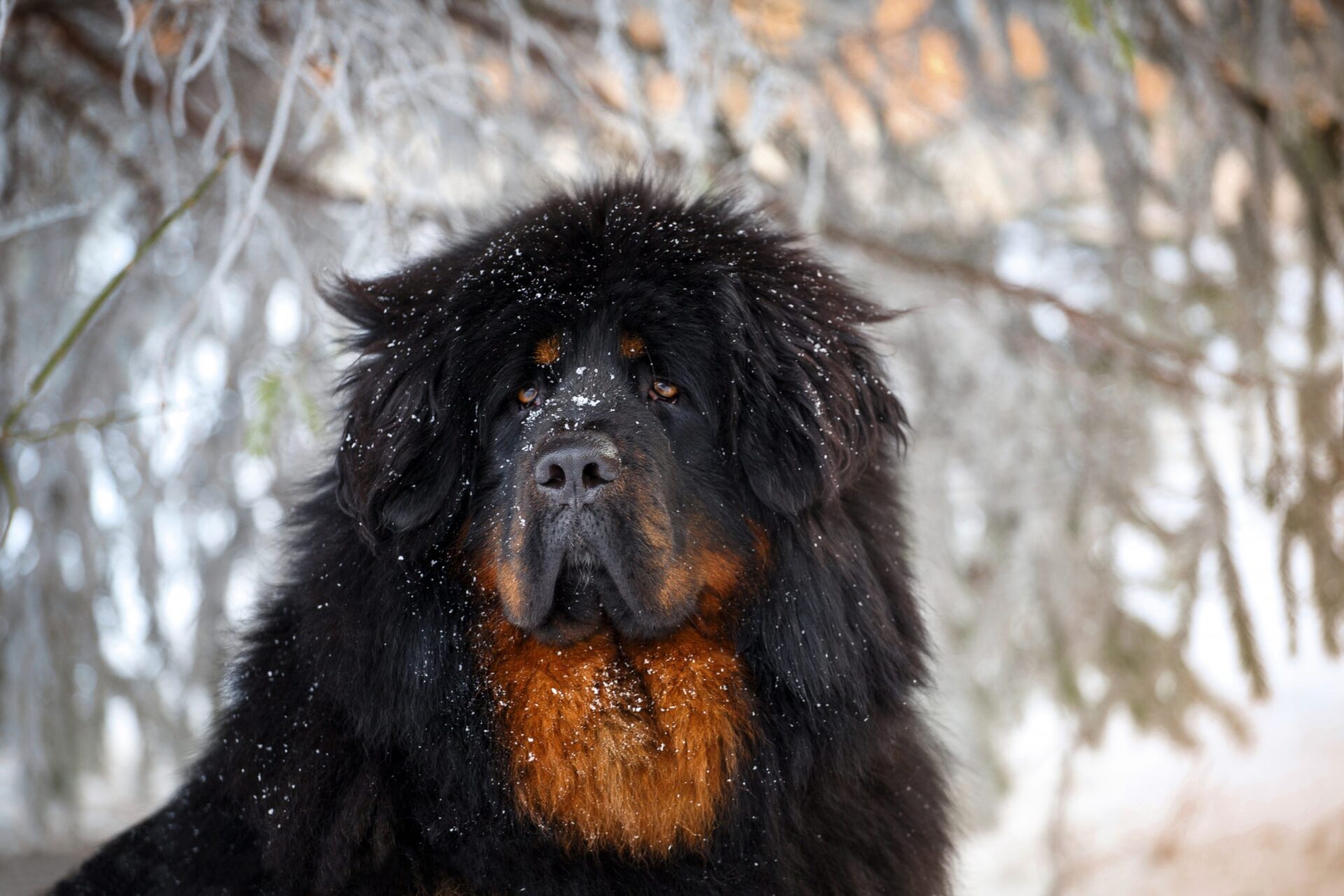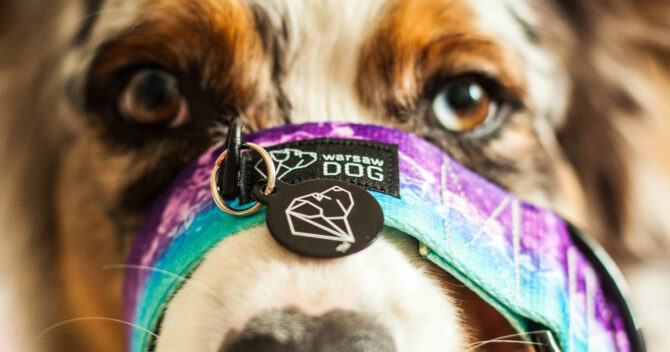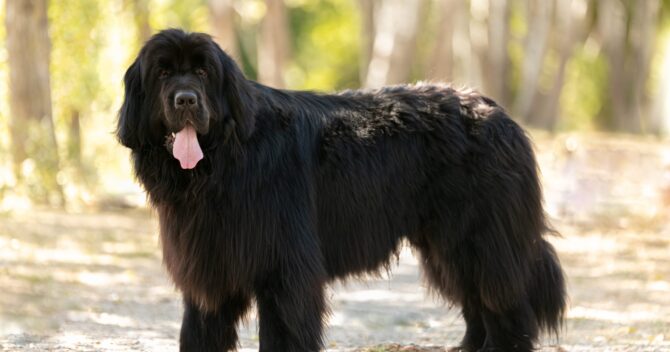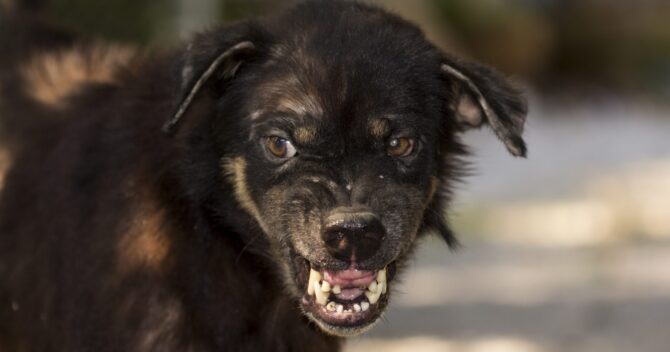Tibetan Mastiff - what does a Tibetan lion look like?
The Tibetan Mastiff (Do Khyi) is an ancient breed of guard and shepherd dogs, originally from Tibet. According to the FCI classification, it belongs to Group 2 Pinscher, Schnauzer, Molossian and Swiss Cattle Dogs, Section 2.2 Mountain-type Molossian. He is a strong, dignified, proportionally built dog with a majestic, serious expression. It owes its proud and impressive appearance to its massive silhouette and abundant cover garment. The Tibetan Mastiff has a broad, heavy head, a short back and a well-defined withers. His strong, well-muscled neck is covered with thick, spiky hair that is creates wide collar, resembling a lion's mane. His a slightly curled tail, carried high, very hairy tail forms a feather.
Mastiffs are profusely hairy. Their double coat consists of a long, thick, straight outer coat and a soft woolen undercoat. It is odorless. Dogs of this breed have various colors: intense black, blue, golden, red and swarthy, clean or with possible burns and sparse white spots. Adult males reach a height of 66 cm (females 61 cm) and weight from 50 to 80 kg (females 35-50 kg). Despite their size and powerful figure, they are agile and durable.
Suggested sizes and widths of accessories for this breed of dog:
Here are the suggested sizes for adult dogs of this breed. They were selected on the basis of many years of experience in sewing accessories and the most common choices of other dog owners of this breed. Remember, only measuring will give you 100% certainty - every dog is different.
Character of a Tibetan Mastiff
The modern Tibetan Mastiff still displays many of the features of its ancestors. He is independent, steadfast and persistent. It has a strongly developed territorial instinct. It guards its territory devotedly, is vigilant and brave. Although he has a tendency to dominate, he is strongly attached to his guardians and is faithful and devoted to them. However, you should be aware that it is generally not as susceptible to training as labrador or German Shepherd. He values his independence very much and you should not expect absolute obedience from him. The Mastiff is eager to play and gets along well with both children and adults. However, he needs an experienced, respectable, and steadfast guardian, and his contact with the child should only take place under the supervision of an adult. In relationships with other animals, the mastiff tends to dominate. However, socialization from a puppy and good training can make him a balanced, gentle and friendly dog.
Health
Tibetan Mastiffs are healthy and hardy dogs. The life expectancy of representatives of this breed is 12-15 years. The most common health problems of these pets are diseases typical for large breeds, i.e. hip and elbow dysplasia. The other ailments include:
- eye diseases
- demodicosis (an inflammatory skin disease)
- Hypothyroidism
Remember that mastiffs need a considerable amount of physical activity to stay healthy. They definitely shouldn't live in a block of flats. Dogs of this breed should be provided with plenty of space and the possibility of observing and patrolling the area.
Nutrition
The Mastiff is not a picky eater, nor does it have any special dietary requirements or problems with excessive appetite. Usually she reaches into the bowl when she really feels hungry. Likes to eat without haste, in moderation, and does not like sweets. His diet works well with ready-made, high-quality wet and dry foods, various meals prepared at home (enriched with vitamin supplementation), as well as the BARF diet, based on raw bones with meat, offal and a small amount of raw vegetables and fruit. During the period of intensive growth, the diet should take into account the increased demand for protein.
How to care for a Tibetan Mastiff?
Caring for a dog of this breed is not complicated. Remember to brush regularly, usually it is enough to brush or wipe the hair with a wet cloth once a week. Only in the moulting period, which takes place in late spring (it lasts about three weeks), you should comb your pet daily. Because the mastiff has an odorless, hypoallergenic coat, frequent baths are not necessary. However, you cannot forget about washing the eyes and ears and cutting the dog's claws. Taking care of the nice appearance of the coat, it is worth adding a biotin preparation to your pet's meals.
Tibetan Mastiff - Pros and Cons
Disadvantages
- has a strong, independent character
- incorrectly brought up, it can become aggressive
- it requires a lot of space, it is not suitable for living in a block of flats
- tends to destroy when bored
- it is difficult to train
Advantages
- is family owned
- possesses the qualities of an excellent watchman
- it is resistant and not very susceptible to diseases
- retains youthful vigor for a long time
Tibetan Mastiff - ctrivia
- The Tibetan "lion" was called by the local people tsang kyi, or the best dog.
- The Tibetan Mastiff is one of the most expensive dogs in the world. The highest price for a representative of this breed reached $ 2 million.
- In China, the red Tibetan Mastiff is associated with wealth and happiness.
Maybe you'll like it:



